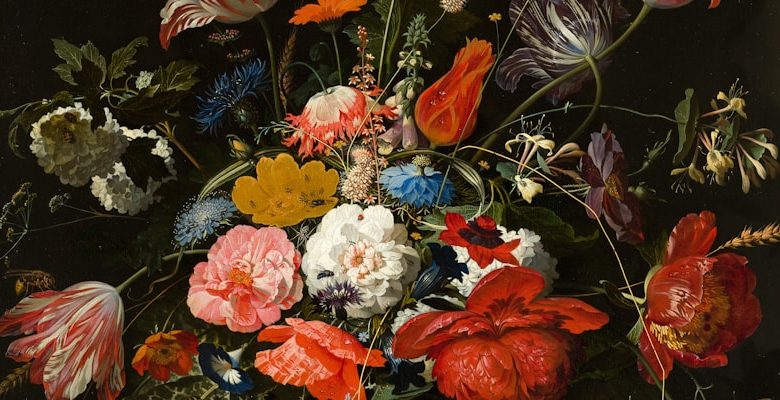How NFTs Are Revolutionizing the Art and Creative Industries

- Understanding the concept of NFTs and how they are changing the art world
- Exploring the impact of NFTs on traditional art markets and galleries
- How artists are leveraging NFTs to reach a global audience and monetize their work
- Challenges and criticisms surrounding the use of NFTs in the art and creative industries
- The future of NFTs and their potential to reshape the way we think about ownership and value in art
- Case studies of successful NFT art projects and their implications for the creative community
Understanding the concept of NFTs and how they are changing the art world
NFTs, or Non-Fungible Tokens, have been making waves in the art world, revolutionizing the way artists create, sell, and collect digital art. These unique digital assets are built on blockchain technology, making them one-of-a-kind and irreplaceable. Unlike cryptocurrencies like Bitcoin or Ethereum, which are interchangeable, NFTs are indivisible and cannot be replicated.
One of the key features of NFTs is their ability to provide proof of ownership and authenticity, solving the age-old problem of digital art being easily duplicated and shared without proper compensation for the artist. This has opened up a whole new world of possibilities for artists to monetize their work and connect directly with collectors and fans.
By tokenizing their art, artists can create scarcity and exclusivity, driving up the value of their creations. This has led to a boom in the market for digital art, with some pieces selling for millions of dollars. Collectors are drawn to the unique nature of NFTs and the ability to truly own a piece of digital art in a way that was never before possible.
As NFTs continue to gain popularity, they are challenging traditional notions of art ownership and distribution. Galleries and auction houses are taking notice, incorporating NFTs into their offerings and exploring new ways to engage with artists and collectors. The art world is undergoing a transformation, with NFTs at the forefront of this revolution.
Exploring the impact of NFTs on traditional art markets and galleries
Exploring the impact of Non-Fungible Tokens (NFTs) on traditional art markets and galleries is crucial in understanding the shifting landscape of the art world. NFTs have introduced a new way for artists to sell and monetize their digital creations, bypassing the need for traditional galleries and auction houses. This has led to a democratization of the art market, allowing artists to reach a global audience and connect directly with collectors.
Traditional art markets and galleries are now faced with the challenge of adapting to this new digital era. While some have embraced NFTs as a way to reach a younger, tech-savvy audience, others are hesitant to fully embrace this new technology. The rise of NFTs has raised questions about the value of traditional art and the role of galleries in the digital age.
Despite these challenges, many see NFTs as an opportunity for traditional art markets and galleries to innovate and evolve. By incorporating NFTs into their business models, galleries can expand their reach and appeal to a new generation of art collectors. This shift towards digital art ownership has the potential to revolutionize the art world and open up new possibilities for both artists and collectors alike.
How artists are leveraging NFTs to reach a global audience and monetize their work
Artists are increasingly turning to Non-Fungible Tokens (NFTs) as a way to expand their reach and generate income from their creative work. NFTs allow artists to tokenize their art, which can then be bought, sold, and traded on various online platforms.
By leveraging NFTs, artists can tap into a global audience of collectors and art enthusiasts who are looking for unique and digital artwork. This opens up new opportunities for artists to showcase their work to a larger audience and gain recognition in the art world.
One of the key benefits of using NFTs is that artists can receive royalties every time their artwork is resold, providing them with a continuous stream of income. Additionally, NFTs provide artists with greater control over their work, as they can set the terms of the sale and ensure that their art is properly attributed and protected.
Overall, NFTs are revolutionizing the way artists interact with their audience and monetize their work. By embracing this technology, artists can take their careers to new heights and establish themselves in the competitive art market.
Challenges and criticisms surrounding the use of NFTs in the art and creative industries
Despite the excitement surrounding the use of NFTs in the art and creative industries, there are also challenges and criticisms that need to be addressed. One of the main concerns is the environmental impact of NFTs, particularly the high energy consumption associated with minting and trading these digital assets. Critics argue that the carbon footprint of NFTs is unsustainable and goes against the principles of sustainability that many artists and creators hold dear.
Another issue is the potential for copyright infringement and intellectual property theft in the NFT space. Since NFTs are essentially digital tokens representing ownership of a piece of art or creative work, there is a risk that unscrupulous individuals could create and sell NFTs of copyrighted material without the consent of the original creator. This raises questions about the legality and ethics of NFTs in relation to intellectual property rights.
Furthermore, the volatility of the cryptocurrency market poses a risk to both artists and buyers participating in NFT transactions. The value of NFTs can fluctuate wildly based on the price of cryptocurrencies, which can result in significant financial losses for those involved. This instability may deter artists from embracing NFTs as a viable platform for showcasing and selling their work.
The future of NFTs and their potential to reshape the way we think about ownership and value in art
As we look to the future, NFTs have the potential to completely transform the way we perceive ownership and value in the art world. These digital tokens have opened up a whole new world of possibilities for artists and collectors alike, allowing for unique and secure transactions that were previously impossible. With the rise of NFTs, artists can now create, sell, and trade their work in a way that is transparent and easily verifiable.
By leveraging blockchain technology, NFTs provide a level of authenticity and scarcity that traditional art forms simply cannot match. This has the potential to revolutionize the art market, making it more accessible and inclusive for artists and collectors of all backgrounds. With NFTs, artists can reach a global audience without the need for intermediaries, opening up new revenue streams and opportunities for creative expression.
Furthermore, NFTs have the potential to reshape the way we think about ownership and value in art. Unlike physical artworks, which can be easily replicated and forged, NFTs are unique and cannot be duplicated. This scarcity adds a new layer of value to digital art, allowing collectors to truly own a one-of-a-kind piece that is backed by blockchain technology.
Case studies of successful NFT art projects and their implications for the creative community
Several case studies of successful NFT art projects have emerged in recent years, showcasing the transformative potential of blockchain technology for the creative community. These projects have demonstrated how NFTs can provide artists with new opportunities to monetize their work, connect with a global audience, and establish ownership rights over digital assets.
One notable example is the artist Beeple, who sold a digital artwork titled “Everydays: The First 5000 Days” as an NFT for $69 million at a Christie’s auction. This groundbreaking sale not only highlighted the growing demand for digital art but also challenged traditional notions of value and authenticity in the art world.
- Another case study is the NFT platform known as SuperRare, which has gained popularity among artists for its curated selection of high-quality artworks and transparent royalty system. Artists on SuperRare have been able to earn significant income by selling their digital creations as NFTs, bypassing the need for intermediaries and retaining more control over their work.
- Furthermore, the NFT art project Cryptopunks has attracted attention for its unique collection of 10,000 algorithmically generated pixel art characters, each with distinct traits and attributes. These digital collectibles have become highly sought after in the NFT community, with some rare Cryptopunks selling for millions of dollars.
These case studies underscore the potential of NFTs to revolutionize the art and creative industries by providing artists with new ways to monetize and distribute their work, engage with audiences directly, and establish verifiable ownership of digital assets. As more artists and collectors embrace this technology, the creative landscape is likely to undergo significant changes, paving the way for a more decentralized and inclusive art market.



